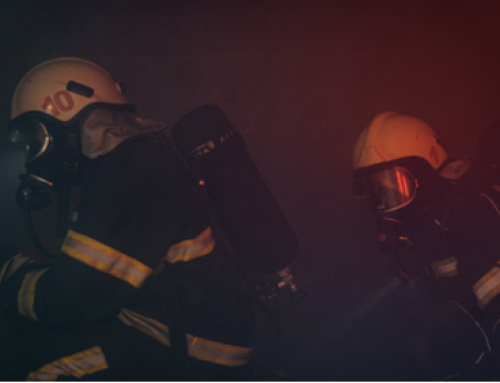Internal bleeding occurs when blood leaks from damaged blood vessels or organs inside the body. Unlike external bleeding, where blood is visible, internal bleeding can go unnoticed, making it particularly dangerous. Recognizing the signs of internal bleeding is crucial as early detection can facilitate swift medical intervention, potentially saving lives.
There are various causes of internal bleeding, including trauma, injuries, surgical complications, and underlying medical conditions. Understanding the common risk factors can help you remain vigilant and proactive when it comes to recognizing this silent threat. By familiarizing yourself with the signs of internal bleeding, you can play a crucial role in identifying this condition early on and providing important information to medical professionals. Your timely action may contribute to quicker diagnosis and appropriate treatment, leading to improved outcomes for those in need.
This blog will provide an in-depth exploration of the signs of internal bleeding, covering both the subtle and more pronounced indicators.
Understanding Internal Bleeding
Internal bleeding occurs when blood leaks from damaged blood vessels or organs inside the body. Unlike external bleeding, where blood is visible, internal bleeding can go unnoticed, making it particularly dangerous. Various factors, including trauma, injuries, surgical complications, and underlying medical conditions can cause it. Recognizing the signs of internal bleeding is crucial as early detection can facilitate swift medical intervention, potentially saving lives.
Different types and locations of internal bleeding require different levels of concern and urgency. For example, intracranial bleeding in the head can result from head injuries and can be life-threatening. Intra-abdominal bleeding in the abdomen can occur due to trauma or organ damage, while retroperitoneal bleeding in the back of the abdomen can be caused by kidney or liver injuries. Intrathoracic bleeding in the chest can result from lung or heart trauma, and intrapelvic bleeding in the pelvis can be associated with fractures or pelvic injuries.
External Cues and Physical Signs
There are external cues and physical signs that may indicate the presence of internal bleeding. These signs can be observed on the body or detected through physical symptoms. External signs may include unexplained bruising, swelling, or localized pain in a specific area. Discoloration or deformity of a body part can also indicate internal bleeding. In some cases, bleeding from body openings, such as the mouth, nose, or rectum, may occur.
Physical signs associated with internal bleeding can manifest differently depending on the location and severity of the bleeding. Dizziness and lightheadedness may result from blood loss, while weakness and fatigue can be caused by a decrease in oxygen-carrying capacity. Rapid or shallow breathing may be observed due to pain or compromised lung function. Abdominal tenderness or rigidity could indicate internal bleeding in the abdomen. Decreased urine output may be a sign of kidney-related bleeding.
Internal Symptoms and Indicators
Internal bleeding can also present with specific symptoms that indicate potential internal organ involvement. In cases of head and brain bleeding, severe headaches, loss of consciousness, confusion, slurred speech, and unequal pupil size may be observed. Abdominal bleeding can result in abdominal pain, distention, nausea, vomiting, blood in urine or stool, and frequent or urgent urination. Chest bleeding may cause chest pain, rapid or irregular heartbeat, coughing up blood, difficulty breathing, or cyanosis.
Recognizing Signs in Special Populations
Recognizing signs of internal bleeding can be more challenging in specific populations such as children and infants or older adults. Restlessness, irritability, excessive crying or fussiness, and a bulging fontanelle (soft spot on the head) may be observed in children and infants. Older adults may exhibit confusion or changes in mental status, weakness or unsteadiness, frequent falls or bruising, fatigue, and loss of appetite. Being aware of these specific indicators in different age groups can aid in the early recognition of internal bleeding.
Immediate Action and Seeking Medical Help
When encountering potential signs of internal bleeding, immediate action is crucial. First, assess the situation to ensure your own safety and gather information about the incident. Call emergency medical services (EMS) or ask someone nearby to make the call, providing accurate details about the suspected internal bleeding. While waiting for professional help to arrive, provide comfort and reassurance to the injured person, staying calm and monitoring their vital signs if trained to do so.
It is important not to delay medical evaluation when internal bleeding is suspected. Internal bleeding can rapidly worsen, leading to severe complications or even death. Time is of the essence, and professional medical intervention is essential for accurate diagnosis and appropriate treatment. Remember, this information serves as a guide but does not replace the advice of healthcare professionals. Always seek immediate medical attention if you suspect internal bleeding or any other medical emergency.
Ongoing Training and Refresher Courses
Metro Safety is a reputable organization that provides comprehensive safety training and services. With a focus on first aid and emergency response, Metro Safety in Vancouver offers a range of courses to equip individuals with the necessary skills and knowledge to handle various medical situations.
Their training programs, such as First Aid Level 3, OFA 2, and OFA 1, are designed to meet industry standards and regulatory requirements, which can be valuable in helping manage critical emergencies in the home and workplace.
Get in touch with us now!








